Hi River Roaders,
Along with our mature trees, our ferns are another defining characteristic of our grounds. They add an element of texture at the ground level, framing blooming plants as well as being notable in their own right. As far as I can tell, we have nine species of native ferns. This week, we’ll look at each, going from least to most common.
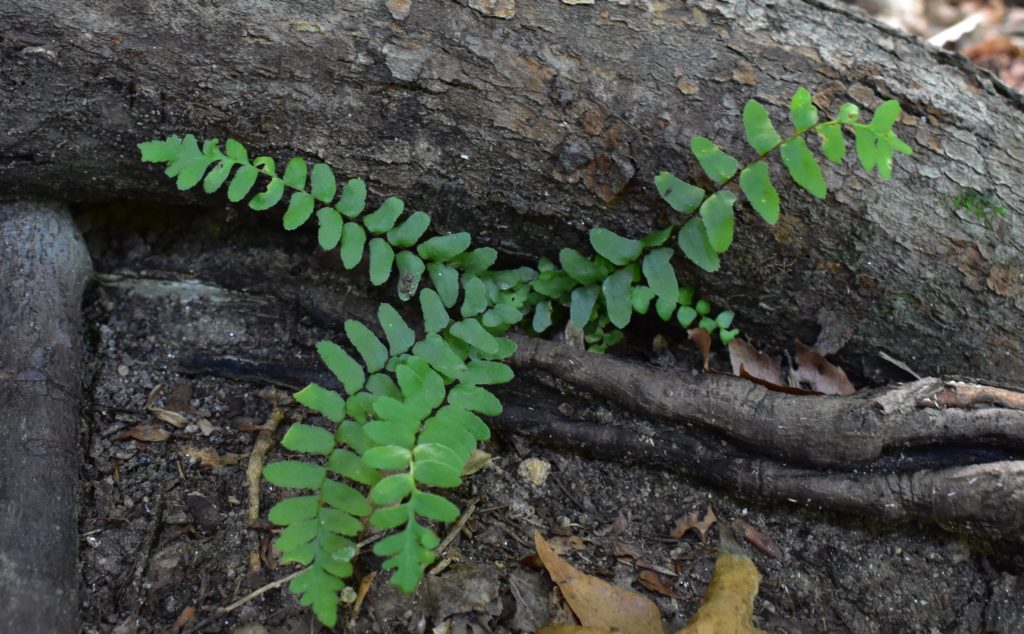
I found one small Ebony spleenwort (Asplenium platyneuron) growing under these tree roots in some densely shaded rocky soil in the back.
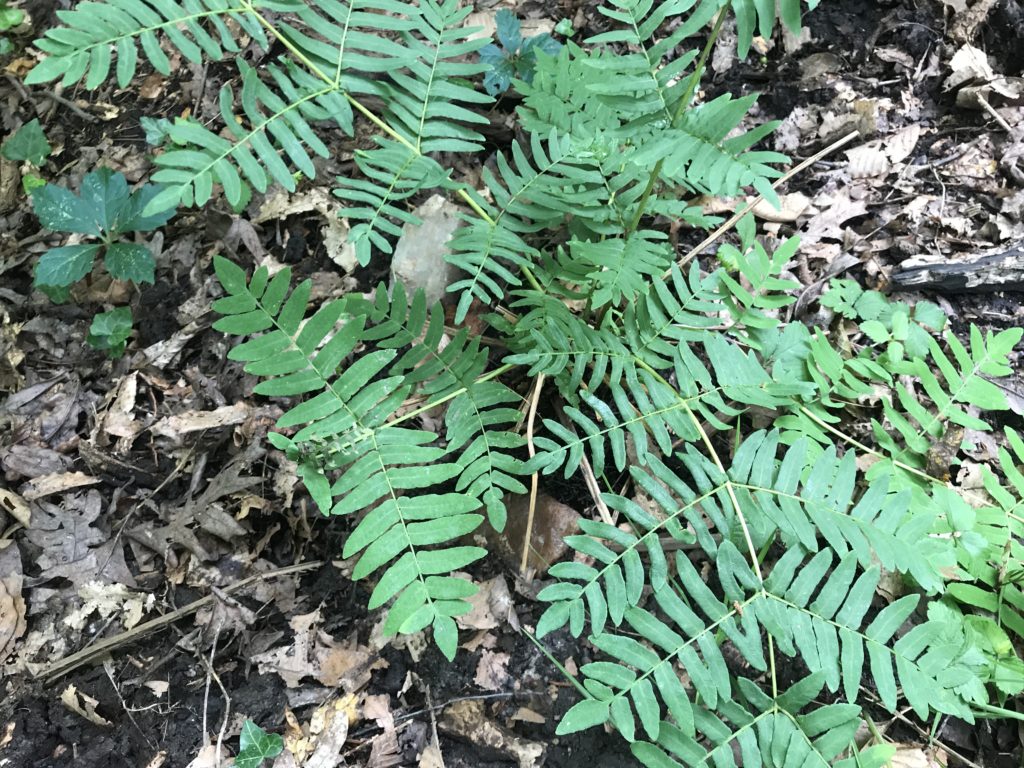
I transplanted this Royal fern (Osmunda regalis) from our yard to the path past the first spring. In the right conditions, they can grow to the size of a small shrub.
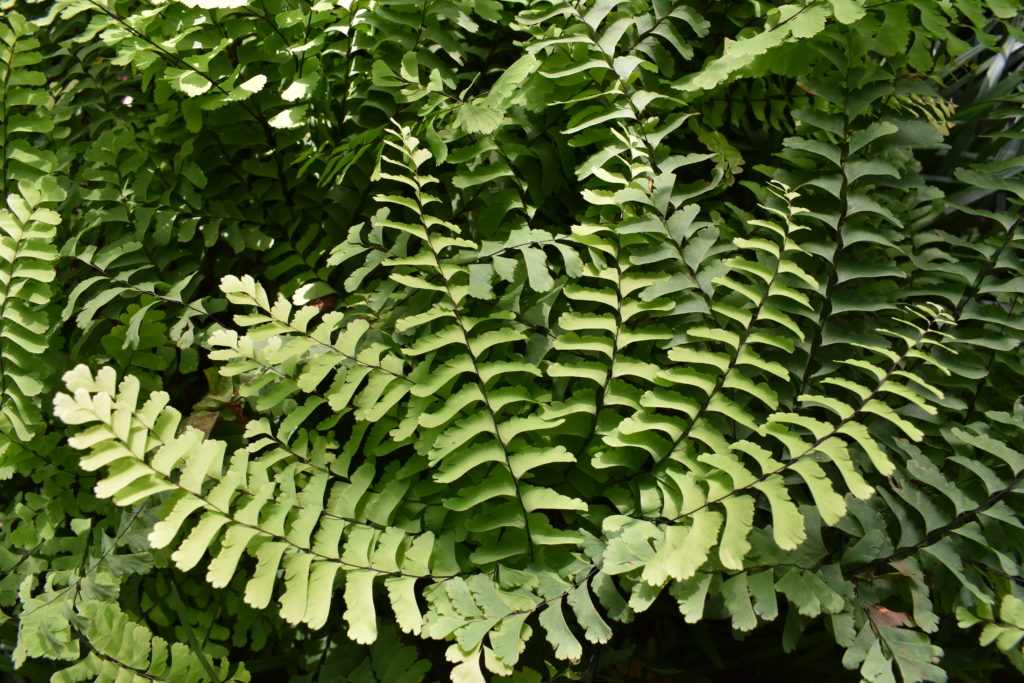
A group of Maindenhair ferns (Adiantum pedatum), growing in the memorial garden near the fountain. My favorite.
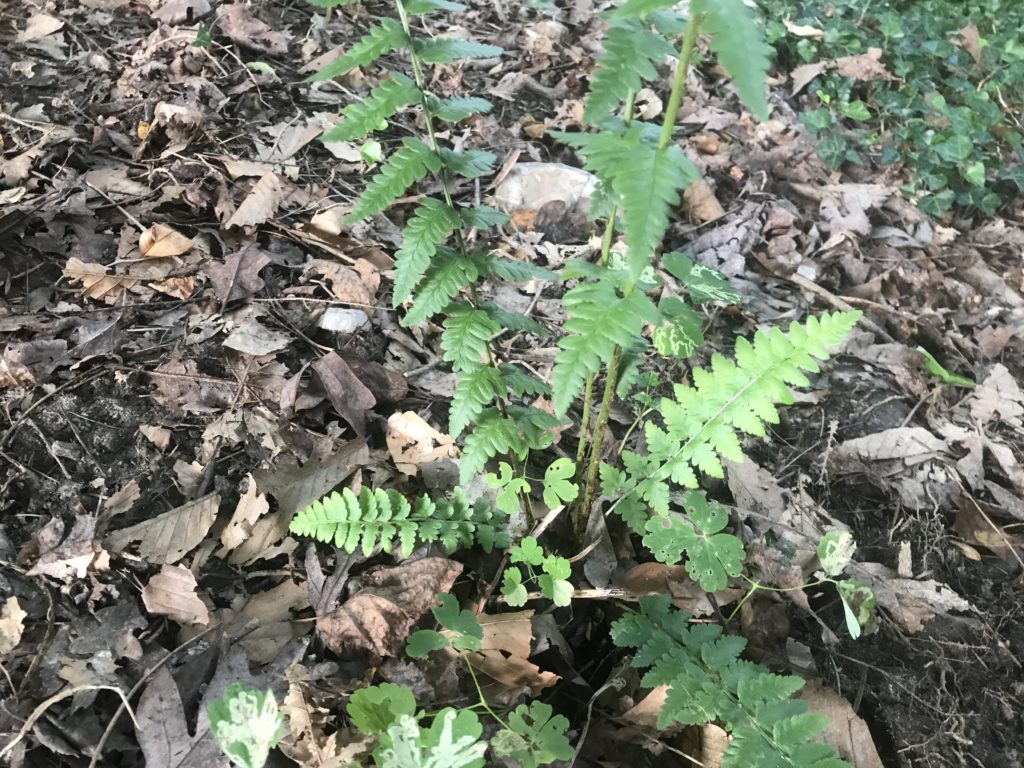
This year we planted four Wood ferns (Dryopteris sp.) along the path on the way to the first spring. This fern and the Christmas fern are our two evergreen ferns.
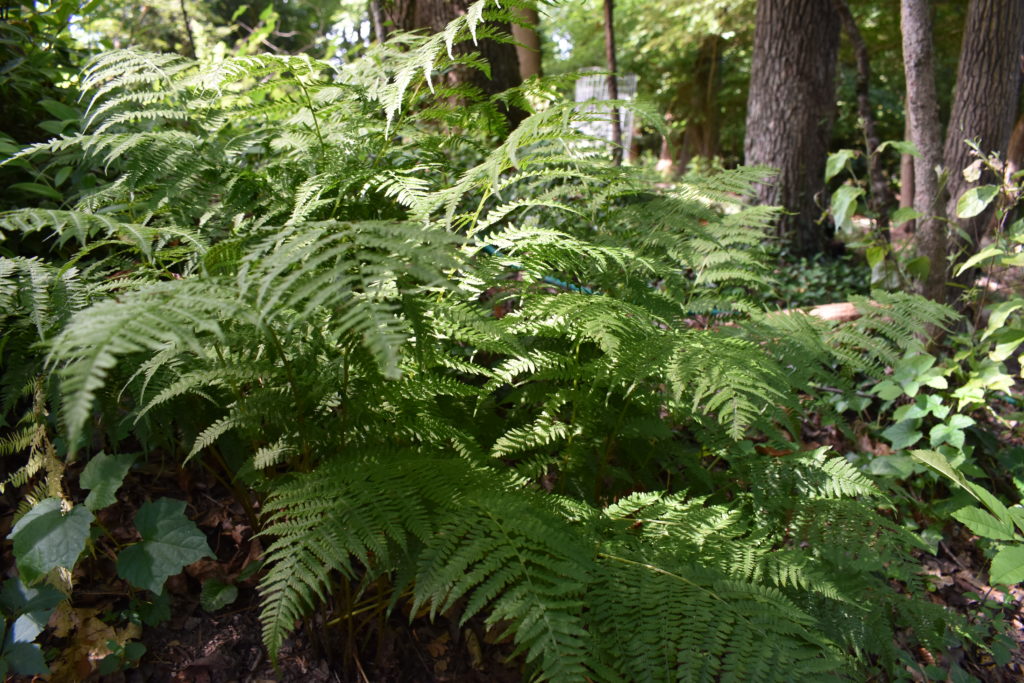
We have several clumps of the delicate Lady fern (Athyrium filix-femina) in the front and back.
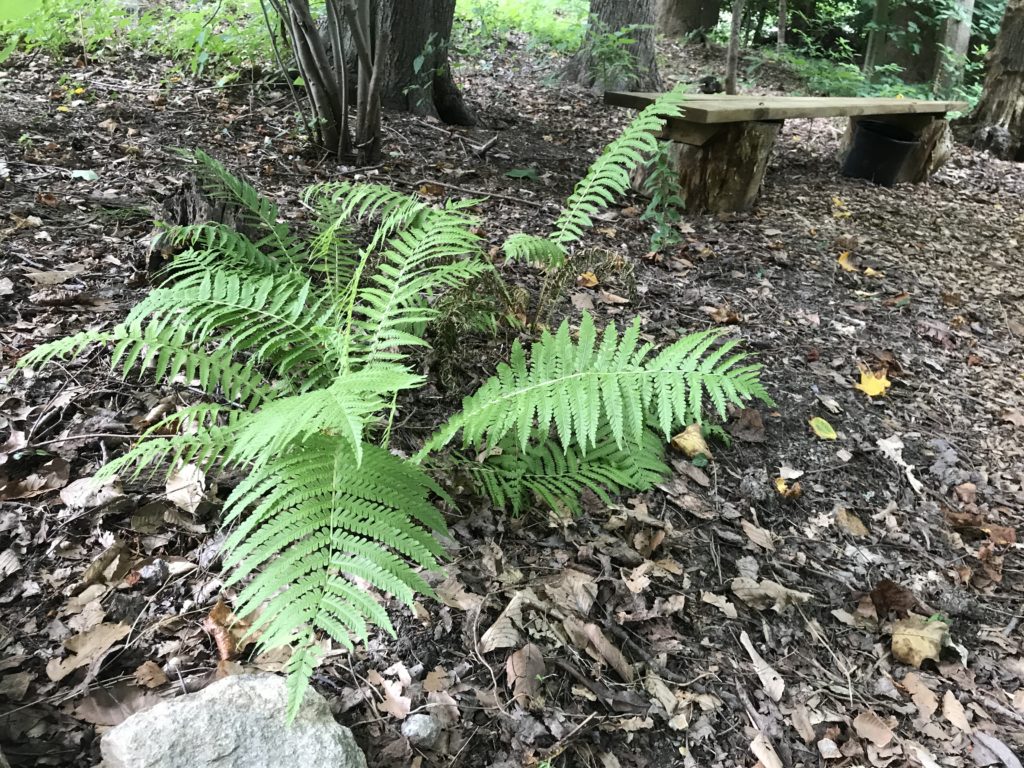
Last year we transplanted about a dozen New York ferns (Parathelyoperis noveboracensis) from Tricia Tice’s yard. They are doing great!
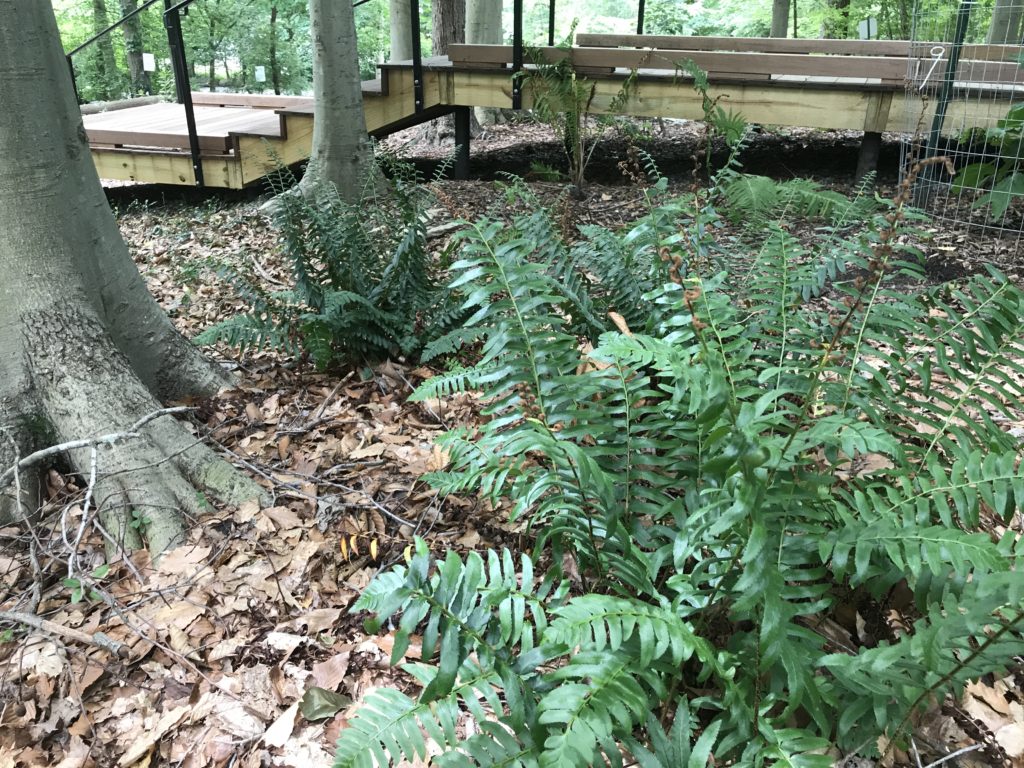
We have a couple dozen Christmas ferns (Polystichum acrostichoides) throughout the grounds. They provide welcome green ground cover in winter.
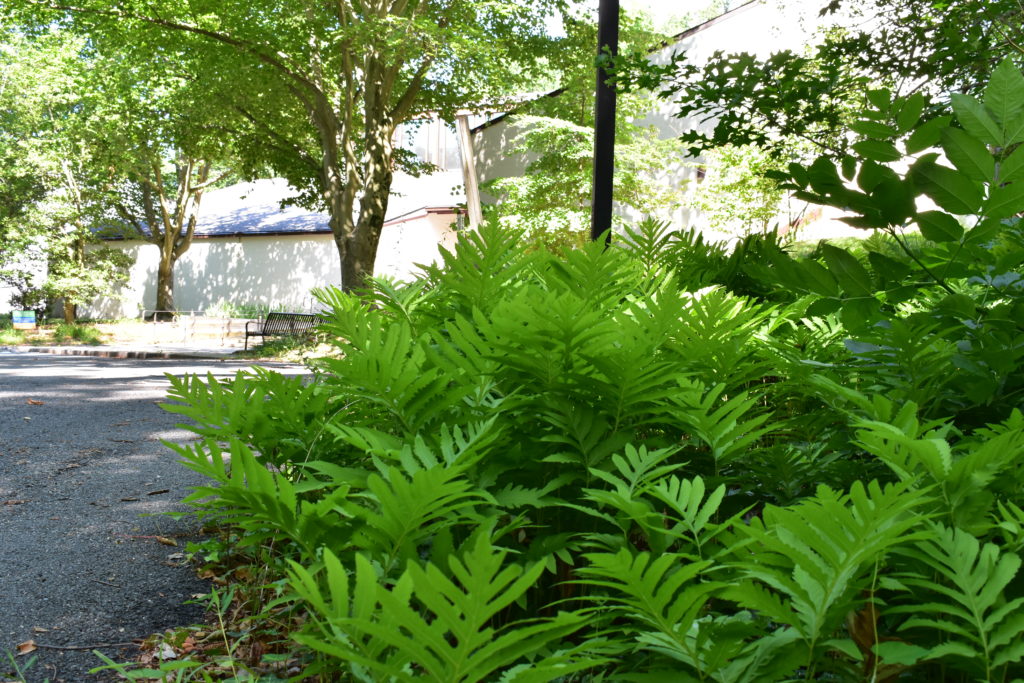
Now to our two most common ferns. These Sensitive ferns (Onoclea sensibilis) provide a deep and lush green as you drive up to our front entrance. My copy of “Petersons Field Guide to Ferns” notes that “The Bracken, Sensitive, Ostrich, and Hayscented Ferns are to be avoided (in the garden) because they increase too rapidly and are almost impossible to eradicate”. Despite that, we are able to keep our Sensitive ferns under control.
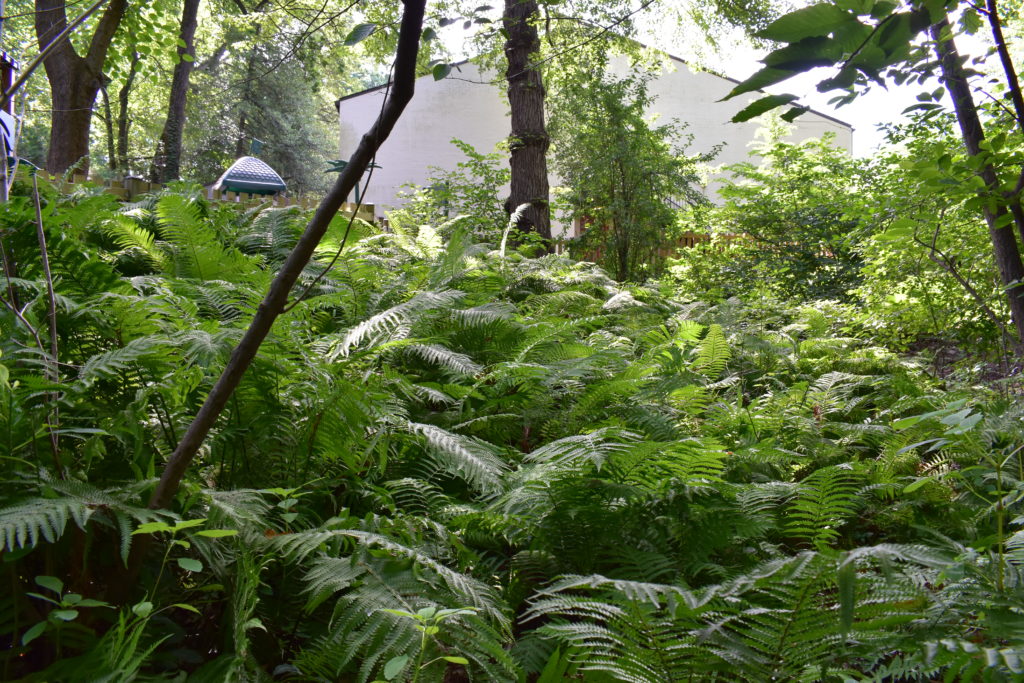
It’s a jungle out there. The Ostrich fern (Matteuccia struthiopteris) is the most common fern on our grounds, shown here between the playground and the springs. They spread aggressively in moist conditions, and we need to constantly thin them to keep them from taking over. Please reach out to me if you would like some to transplant. They can be well-behaved in dryer conditions.
That’s all for this week. Stay cool!
Joe
